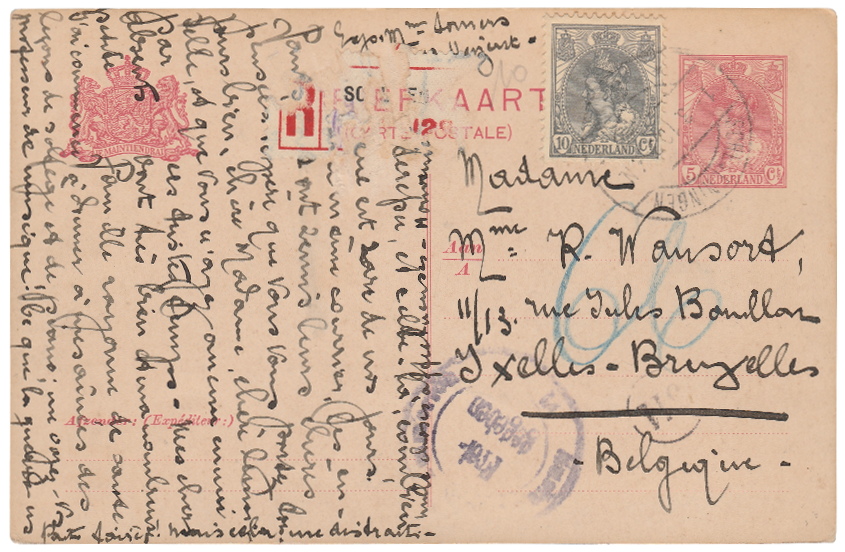When World War I started in 1914, the Netherlands declared themselves neutral and had to keep to certain regulations that belong with neutrality.
A few of these are:
– The country shows no favouritism to any country that is at war with each other.
– Borders will be closed and guarded as good as possible.
– None of the parties at war will be allowed access to the neutral country.
– Military personal of the countries at war that cross the border have to be disarmed, arrested and placed in internment camps.
– Civilian refugees have to be provide with shelter as good as possible.
During WW I most of Belgium was occupied by the German forces in 1914 and borders with the Netherlands where under strict control, by the Germans and the Dutch armies. Although the Netherlands were neutral, war could still spread to the country if it did not perform correct on the neutrality rules.
In the first few months the mail connection with occupied Belgium and the Netherlands was almost none existing. After some stability was returned the mail connection was possible, but all mail that wasn’t from diplomats were subject to censorship.
In the beginning some mail connections were available directly linked with Belgium, but later in the war all mail had to be send via Germany. This meant long processing times and frustrations by senders and receivers of mail. For the people who could afford the registration and/or express fees mail would go faster through the censorship.
One of the biggest concerns at German censorship were hidden messages under stamps and labels. In 1916, the Dutch Authority tried an experiment with special labels for internments to send mail to their loved ones. However, the experiment failed as the Germans send all mail back due to the large special labels that the internments had to affix to the envelopes, with the possibility to place a secret message under the labels.
The postcard above was send by registered mail from Scheveningen to Brussels and delivered at the censorship station in Emmerich. Here one of the persons involved in processing the mail carefully removed partially the registration label since the post office clerk in Scheveningen placed it over the text. After there were no hidden messages established and the rest of the message was of no importance of the war situation the card was cleared by the mark “Frei gegeben” and send through to Brussels.
The card was send on 1 March 1918 and there are no receiving postmarks on it.
The Dutch international postcard rate was 5 cent from 1 July 1875 till 1 March 1921. The registration fee was 10 cent from 1 April 1879 till 1 November 1919. In total the correct rate of 15 cent was paid.
Normally philatelists try to avoid heavily damaged items for their collections but in this case it is a perfect example to obtain for the collection, showing an important piece of postal history.


